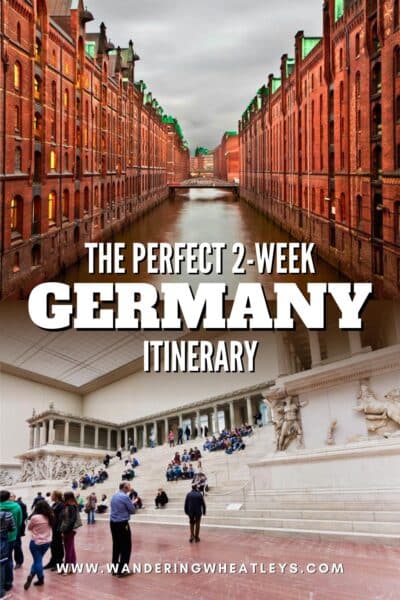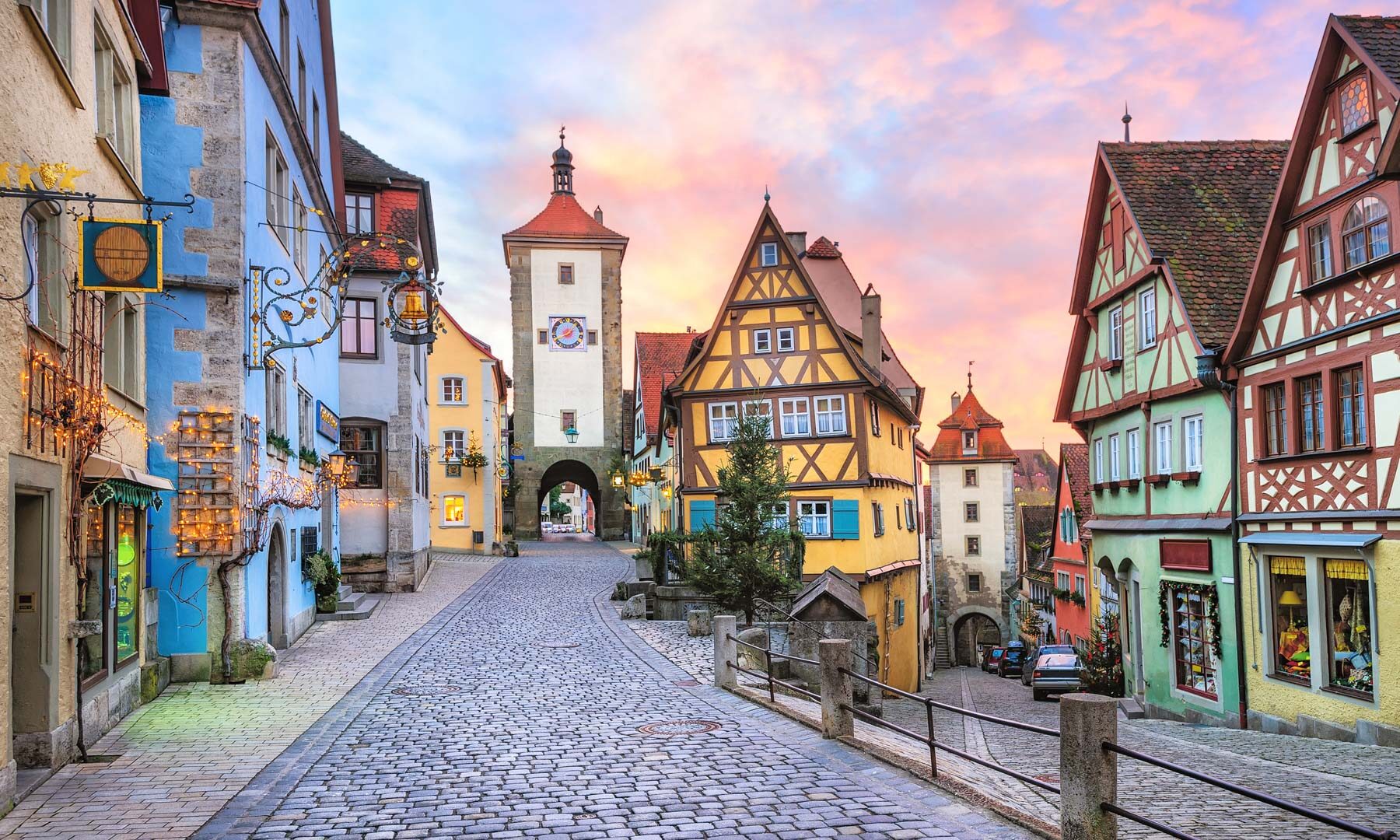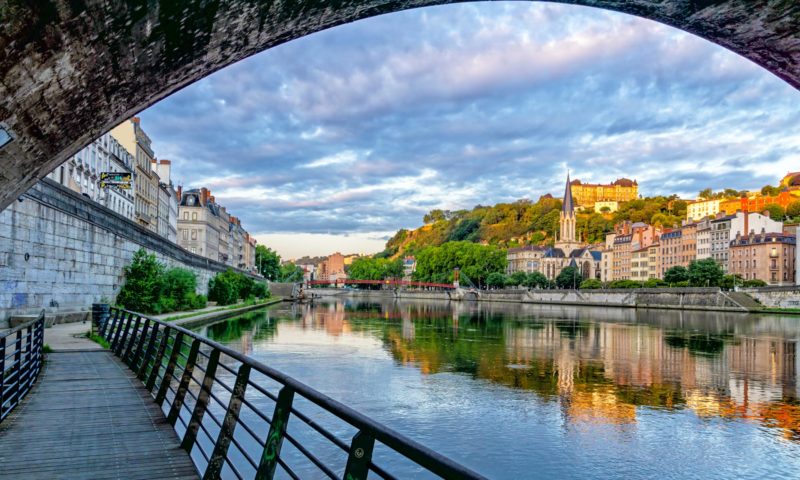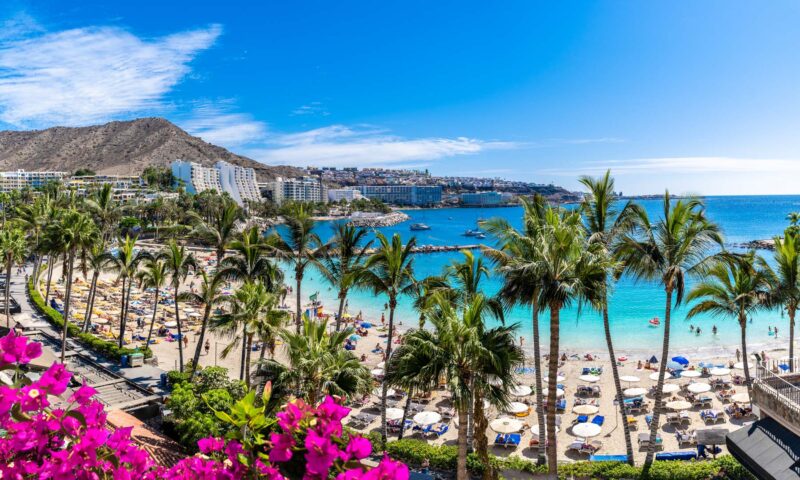How difficult can it be to plan a 2-week Germany itinerary? At first glance, putting together a 2-week vacation plan seems easy enough. You can start in Berlin, where the remnants of the Berlin Wall reveal stark truths about the nation’s divided history, where the Tempelhof Airport has become an unusual symbol of Berliner’s resourcefulness, and where currywurst and doner kebabs are an early morning antidote to the German capital’s bars and clubs.
But where do you go next? Head south, and you’ve got the beer gardens and mountain peaks of Bavaria to explore. The Romantic Road calls out with its medieval old towns and Gothic church spires, while fairytale castles rise above the countryside.
You could go north instead, where post-industrial Hamburg has been revitalized into one of Europe’s coolest cities, or east to the banks of the River Rhine, where Cologne’s twin-spired cathedral is one of the top places to visit in Germany. Then there’s Dortmund and Dusseldorf, Frankfurt and Heidelberg, Stuttgart and Dresden – the list of potential destinations to include just gets longer and longer.
That’s why our perfect 14-day Germany itinerary doesn’t even try to include all of the places you could try and squeeze into a single trip. Instead, we’ve gone for quality over quantity and selected a combination of cities, medieval towns, and countryside stops that offer a unique overview of Germany as a whole, with plenty of time to explore all of them. We start in Berlin, and visit Hamburg, Cologne, and Frankfurt before finishing in the beer halls of Munich, with a few stops in between.
If you’re planning a European getaway, then keep reading as we unveil the best 2-week Germany itinerary!
Disclaimer: This post may contain affiliate links. If you make a purchase or booking through one of our links we may earn a small commission (don’t worry, it’s at no extra cost to you).
Two Weeks in Germany
The Best Time to Visit Germany
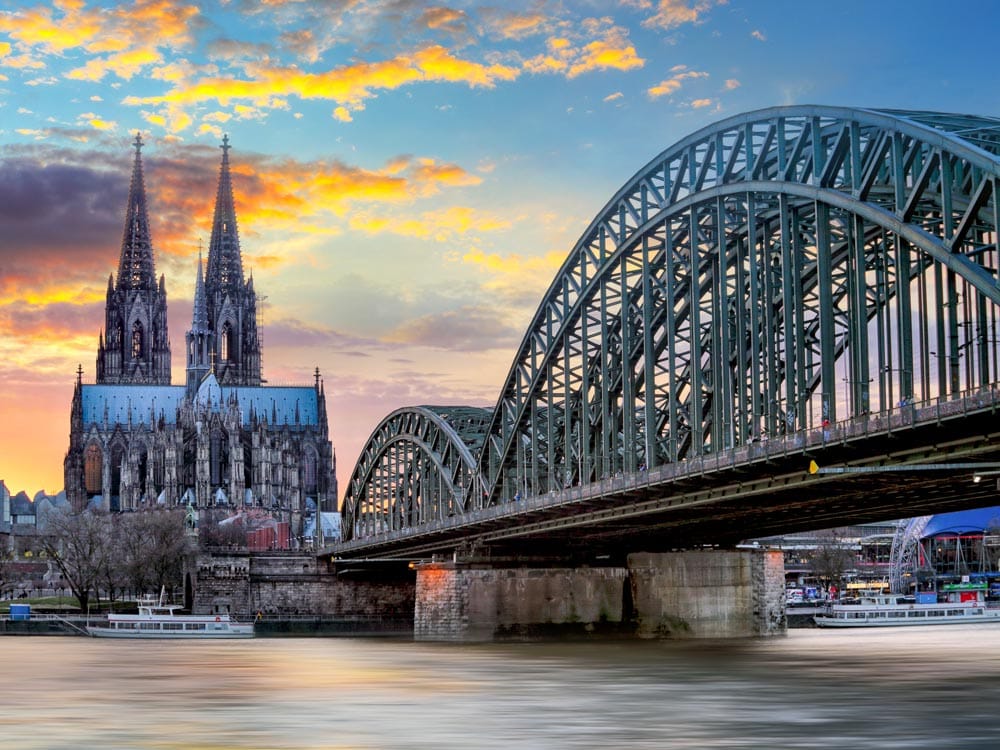
We love planning trips to Germany at all times of the year because each of this European nation’s four seasons offers a distinct travel experience.
The classic German adventure typically takes place in the summer months, when the days are long, the sun is shining, and temperatures reach into the high 68°F (20°C) or, on rare occasions, even above 86°F (30°C). You can always expect a little rain, even in summer, but the weather remains remarkably consistent whether you’re on the northern coast or in the Bavarian Alps.
Summer is perfect for hiking, beer gardens are packed, and Berlin’s party scene never seems to end. The crowds in popular destinations can get overwhelming, however, particularly when you’re sharing 13th-century cobbled streets and cathedrals with a mass of other tourists. To beat the crowds, consider traveling in spring or autumn instead.
Both of these shoulder seasons bring cooler climes, and spring is a particularly vibrant time to visit once the snow has melted on the mountain slopes. Autumn brings golden hues, as well as cultural events like wine harvests and the infamous Oktoberfest. Winter is an exceptional time to visit Germany, with the nation’s quaint towns taking on a fairytale-like character that’s more Disney than it is real life.
Indeed, Germany is renowned for its Christmas markets, and in certain cities, the winter season can bring more tourists than the summer. For a true European Christmas market experience, there’s no better place to be than Germany, with cities like Munich, Nuremberg, and Berlin hosting countless markets and fairs from late November until early January.
Things to Know Before You Go
Germany is one of the central pillars of the European Union. If you’re from another EU country, you don’t need to worry about a visa. Otherwise, you’ll need to ensure you’ve got yourself a valid Schengen Visa or a visa-free exemption.
The rules change all the time, so check your country’s requirements before traveling. Generally speaking, the Schengen Visa allows you to visit all of the 27 Schengen Zone member countries of the EU, including Germany. If you’re from the US or from the UK, you can currently visit the EU without a Schengen Visa, but only for 90 days max.
With your visa (or visa-free access) sorted, you can start planning for your 2 weeks in Germany. You’ll need to get yourself some Euros or a credit or debit card that works abroad. Cash is still very prevalent in Germany, and you’ll find ATMs all over the country, even in the smallest of villages.
You’ll also want to grab yourself a German phrasebook. While many Germans inevitably speak impeccable English, you’re in Germany, and it helps to at least try to speak the local language!
Brush up on your cultural etiquette, too. Germans are sticklers for rules, so remember to queue like everyone else, don’t jaywalk, and be polite and courteous when you’re out and about.
Different cities and regions have various traditions. In Cologne, for example, you’ll find it useful to learn about the particular way the local beers (Kolsch) are served in the pubs, or you could get caught out with more drinks than you bargained for!
Getting Around Germany
Our 14-day Germany itinerary starts in Berlin and ends in Munich, two cities with extensive domestic and international connections. Both have major international airports, with regular flights to short-haul destinations within Europe (London, Paris, Vienna, Madrid, Warsaw, etc.) and long-haul cities and hubs (including New York, Los Angeles, Istanbul, Dubai, Doha, and many more).
You can easily fly into Berlin and fly home from Munich. Or you can make Germany the start, the end, or even the middle of a wider European trip. Both cities are well connected to Europe’s rail network, with sleeper trains crisscrossing the continent from Berlin to Prague, Munich to Budapest, and so on. Like flights, sleeper trains are best booked in advance to get the best prices and berths.
You’ll also be happy to hear that Germany has one of the most efficient, and extensive, public transport systems in the world. The itinerary below can easily be completed solely using public transport in the form of boats, buses, trains, trams, or even bicycles.
Budget bus companies like FlixBus are often the most cost-effective way to travel between cities. However, the trains are generally quicker and more comfortable. Book ahead of time and you can score great deals on advance tickets, although you’ll need to stick to the specific train times booked.
Different types of trains have different costs, with the slower regional trains being cheaper than the faster InterCity Express trains, for example. Deutsche Bahn, Germany’s national rail network, often releases cost-effective tickets offering unlimited travel on particular train routes or classes of public transport, so watch out for these when you’re mapping out your Germany itinerary.
Different cities have different public transport systems within their city limits. Munich and Berlin each have an excellent integrated public transport system that includes U-Bahn and S-Bahn lines, as well as trams and buses. Tickets generally need to be purchased in advance and validated before traveling, or you’re risking a large fine from the ticket inspectors.
Germany Itinerary: 2 Weeks to Explore the Highlights of the Country
Berlin – 3 Nights
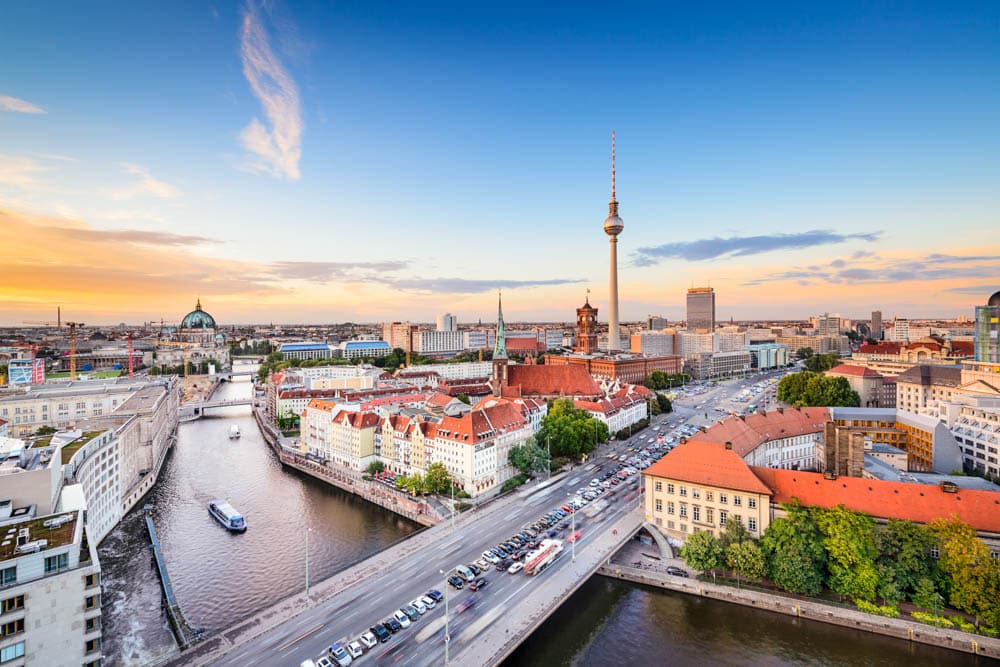
The first stop on your 2-week trip to Germany is none other than Berlin. After all, where else should a German journey start other than the nation’s grand capital? Located on the banks of the River Spree, Berlin is known for its museums, national institutions, its buzzing nightlife, and a certain infamous concrete wall.
Berlin has a long history dating back to the Neolithic era, but join a free walking tour when you first arrive, and you’ll learn that the city you see today really began to take shape in the medieval era. As Prussia grew to prominence, Berlin became the capital of the Kingdom of Prussia, and in 1871, it became the natural capital when Germany was unified for the first time under Otto von Bismark.
Reichstag
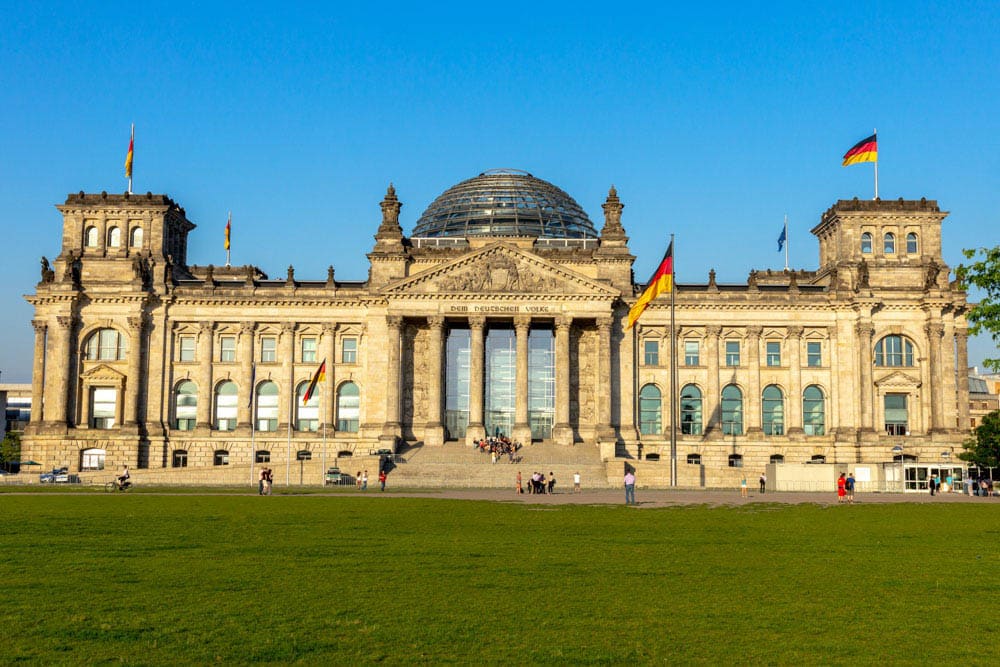
If you’re interested in German politics, then head to the Reichstag, where the nation’s parliament sits. Take a tour, and then enjoy blistering views of Berlin from the iconic glass-dome rooftop.
Museum Island
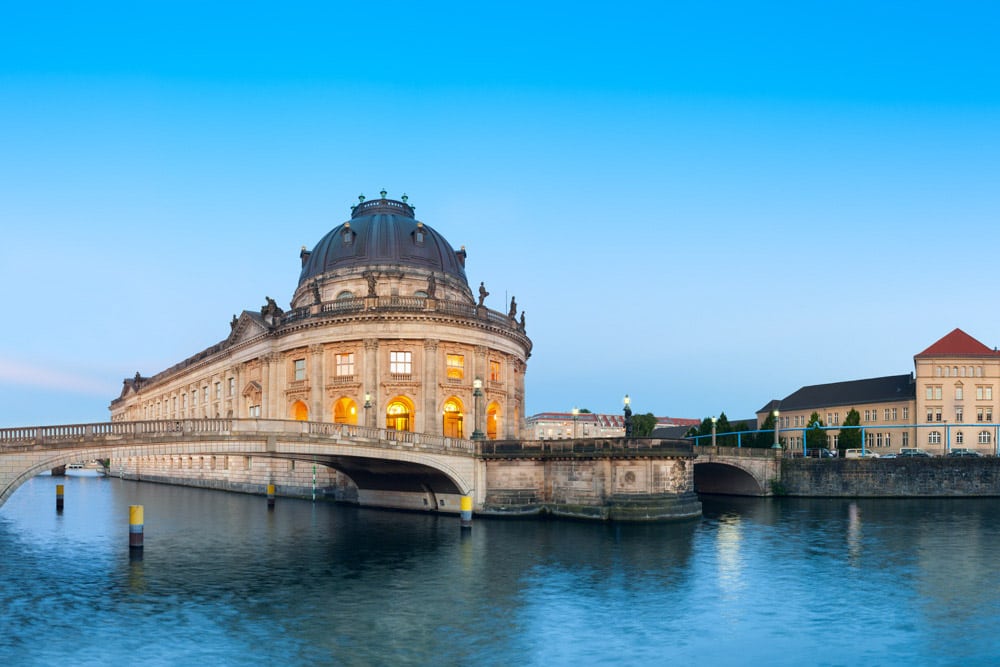
Next up is Museum Island, where you’ll dig deep into world history at the five museums that make up Berlin’s most famous UNESCO World Heritage Site.
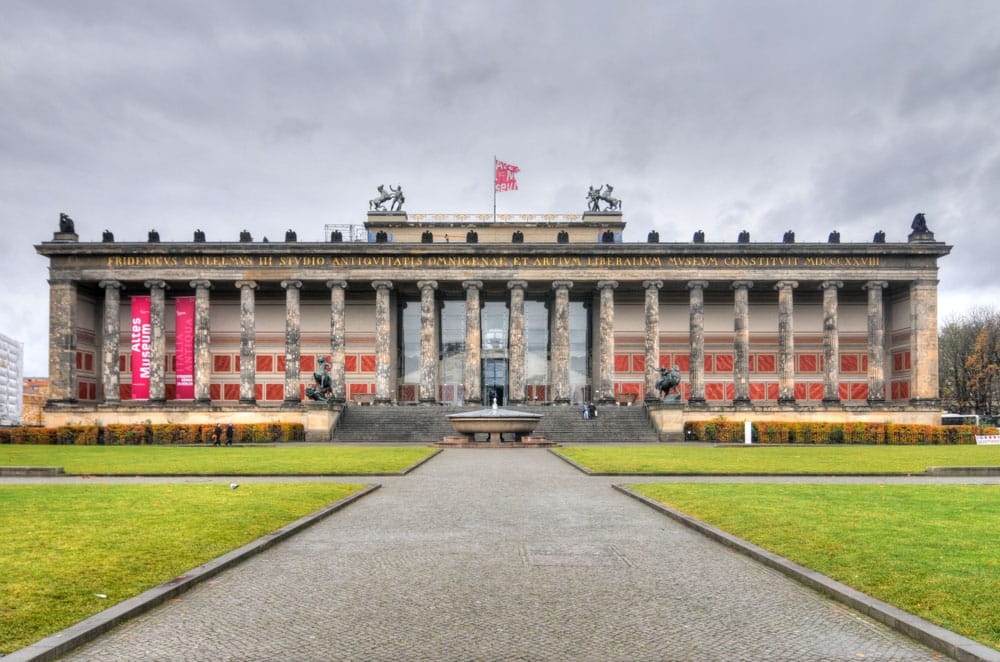
Ever expanding, the oldest museum is the Altes Museum (literally: Old Museum), which dates back to 1830 and is home to ancient artifacts and archaeological finds from the Greek and Roman eras.
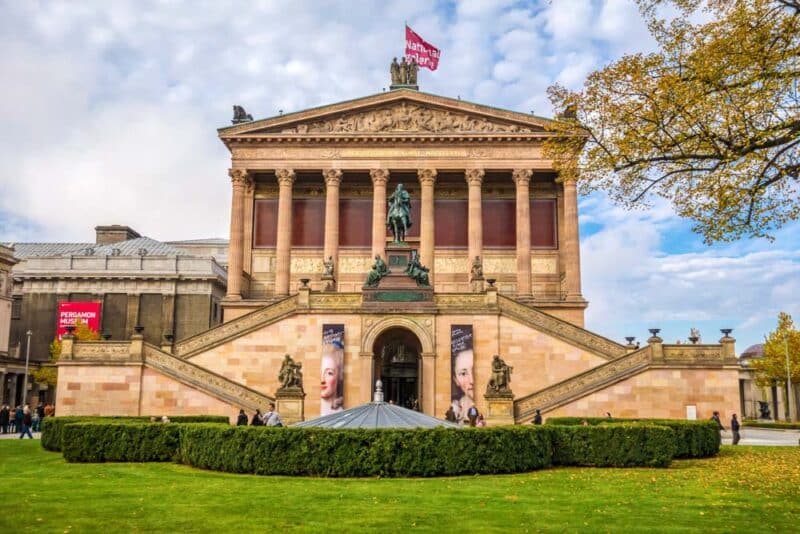
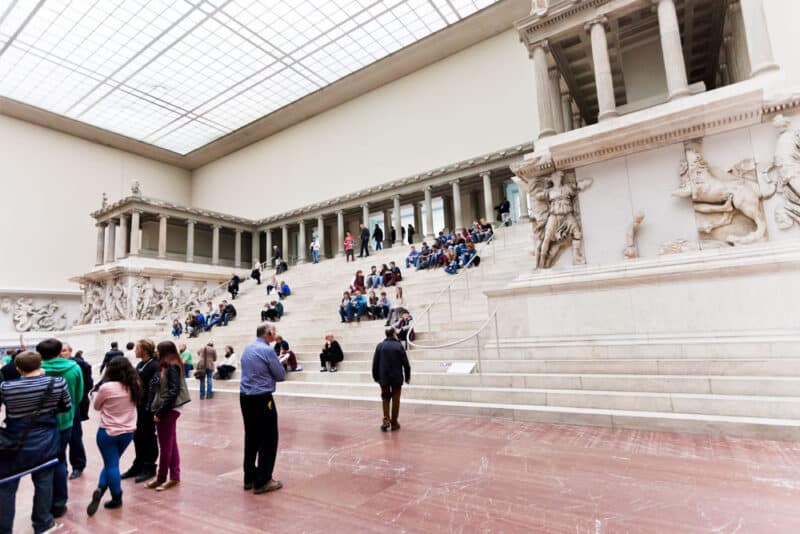
The Neues Museum (the New Museum) opened in 1859 and holds Berlin’s collection of Ancient Egyptian relics, the Alte Nationalgalerie (the Old National Gallery, dating to 1876) hosts 19th-century artwork, The Bode Museum is home to Byzantine art, and the iconic Pergamon Museum is where you’ll find the controversial remains of the Ishtar Gate of Babylon, which many argue should be in Iraq.
Memorial to the Murdered Jews of Europe
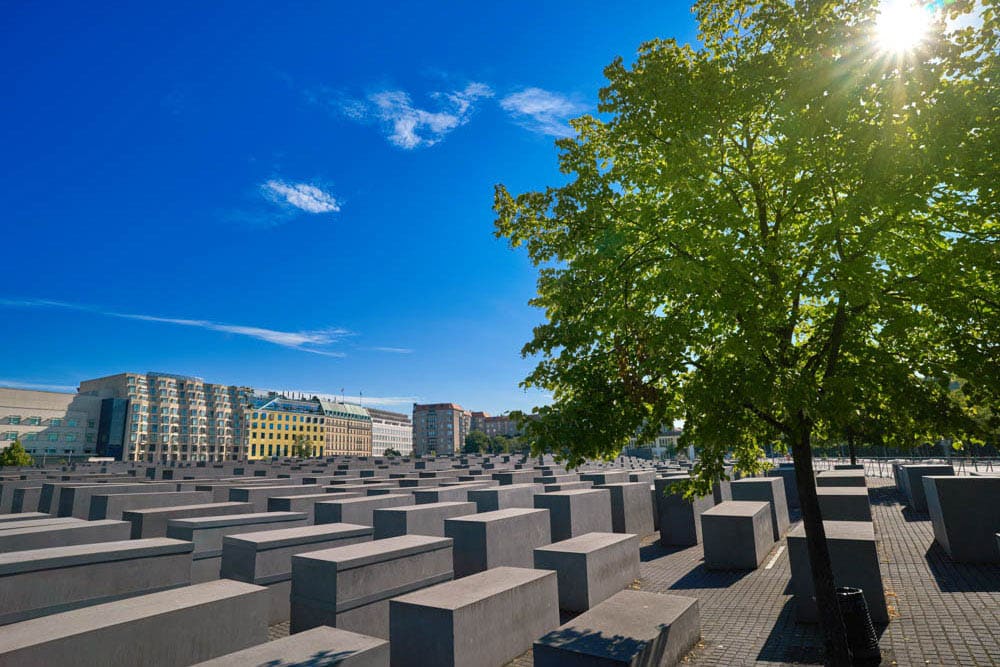
Museum Island alone can take up an entire day of your stay, which is why we’ve suggested a full three days to kick-start the trip. After digging into ancient history, we suggest visiting the somewhat harrowing, but essential, Memorial to the Murdered Jews of Europe. This striking monument consists of thousands of concrete stelae located near the Brandenburg Gate and an underground Information Center that narrates the dark story of the Holocaust so it never happens again.
East Side Gallery
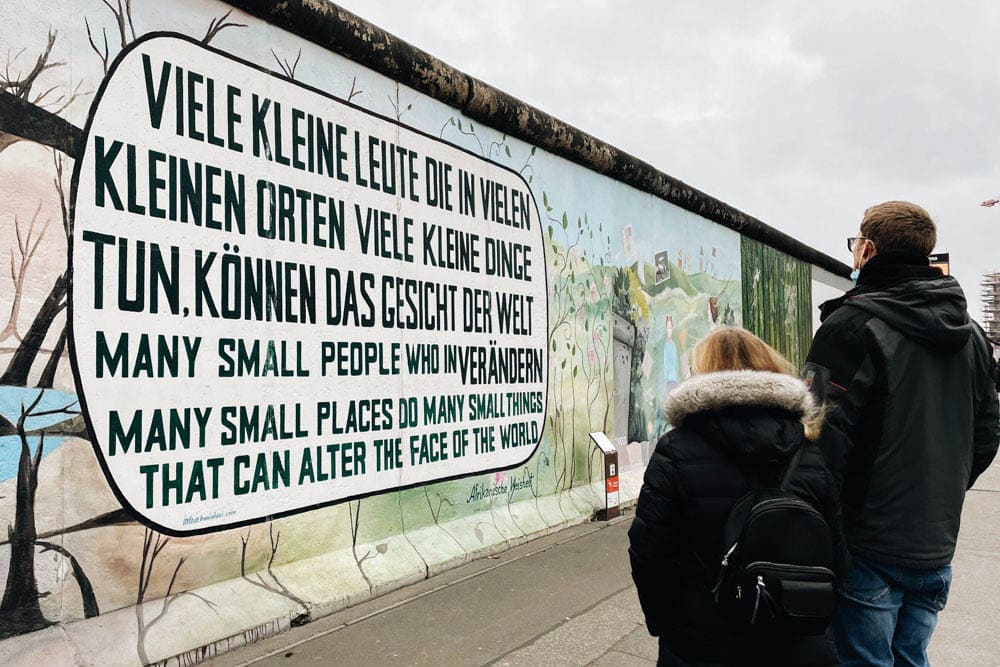
After the Second World War, Berlin was divided between the victorious allies, and soon enough, the city itself was divided by the Berlin Wall. The wall came to symbolize the Cold War, and you can learn more by visiting Checkpoint Charlie (which was once the gateway between East and West Germany) by joining a dedicated Berlin Wall Tour or by visiting the East Side Gallery, where the remaining segments of the concrete monstrosity have been transformed into an open-air art gallery.
More Places to Visit in Berlin
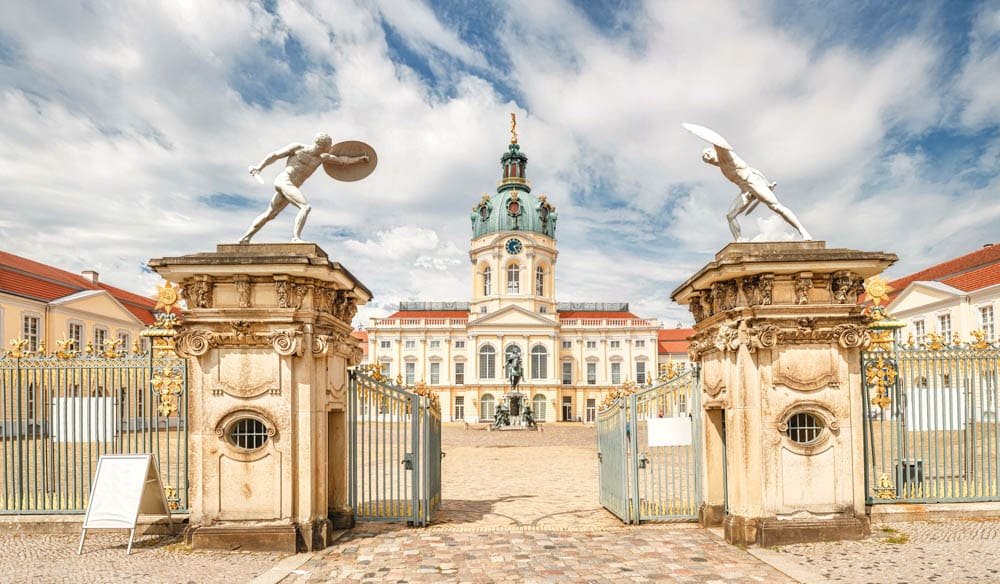
There’s still so much to do in Berlin because it is, after all, the European Union’s largest city. Visit Tempelhof, an old airport which has been repurposed as a public park. Explore Charlottenburg Palace, Tiergarten, and Potsdam, learn what life in East Germany was like at the DDR Museum, or visit the curious David Hasselhoff Museum, where you’ll find a shrine to the man who rocked out on the Berlin Wall.
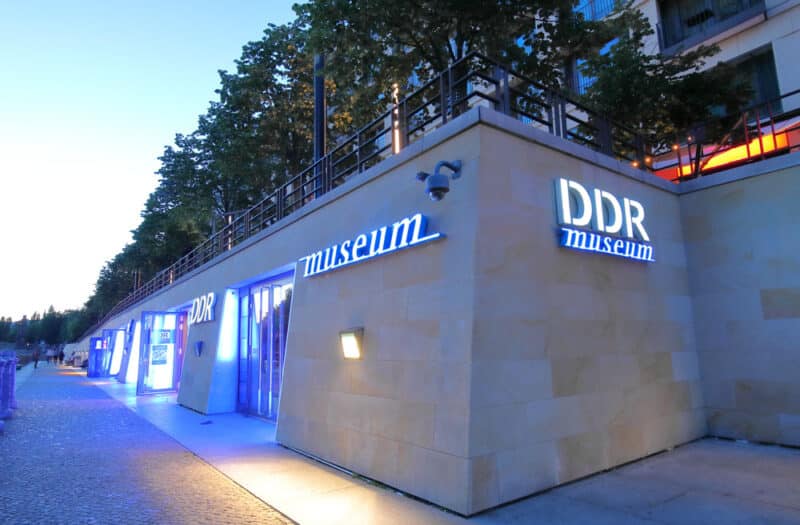
Then you’ve got endless bars, pubs, and clubs to visit in the evening before revitalizing yourself with a doner kebab or a plate of currywurst and doing it all over again the next day.
Hamburg – 2 Days
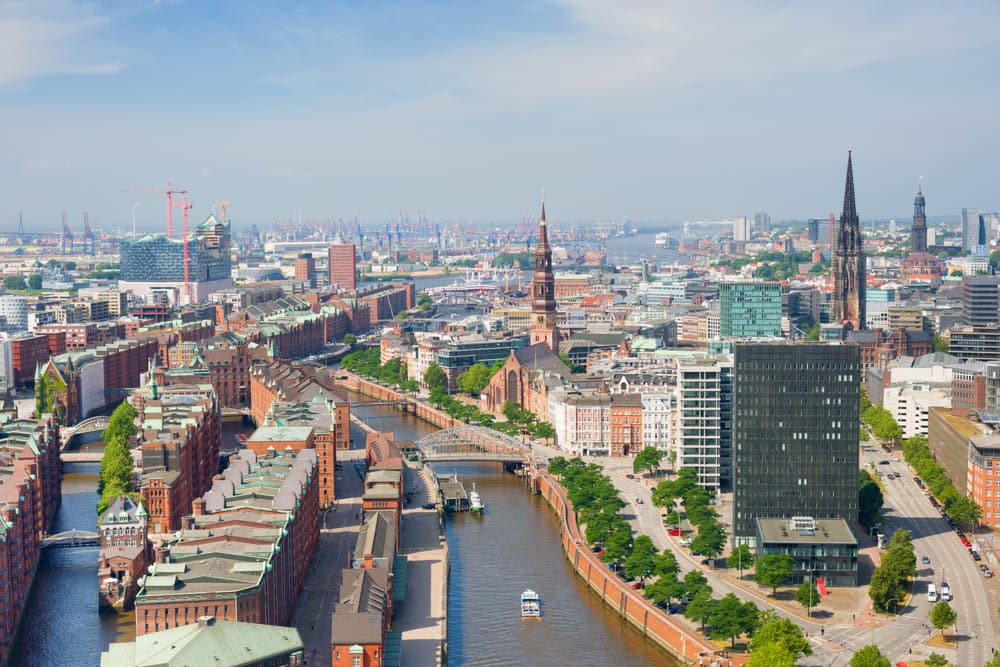
Next up is Hamburg, Germany’s second-largest city. Located less than two hours northwest of Berlin, Hamburg is a former industrial powerhouse that’s shaking off its rough and ready image of the past. You’ll be staying on the banks of the River Elbe, where a vast network of canals rival Venice, but are little known outside of Germany.
Speicherstadt
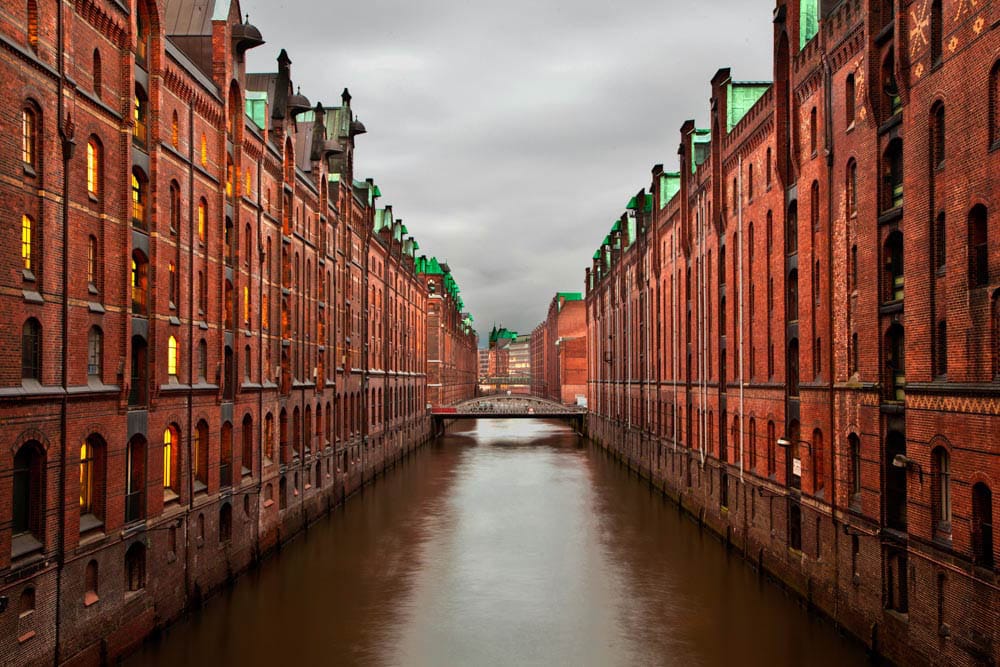
Start by exploring Speicherstadt, a UNESCO World Heritage Site that’s home to Hamburg’s iconic red brick warehouses and wooden waterside buildings. Found within HafenCity, visit the Elbe Philharmonic to see a representation of the unusual blend of old and new that pervades Speicherstadt.
Altstadt
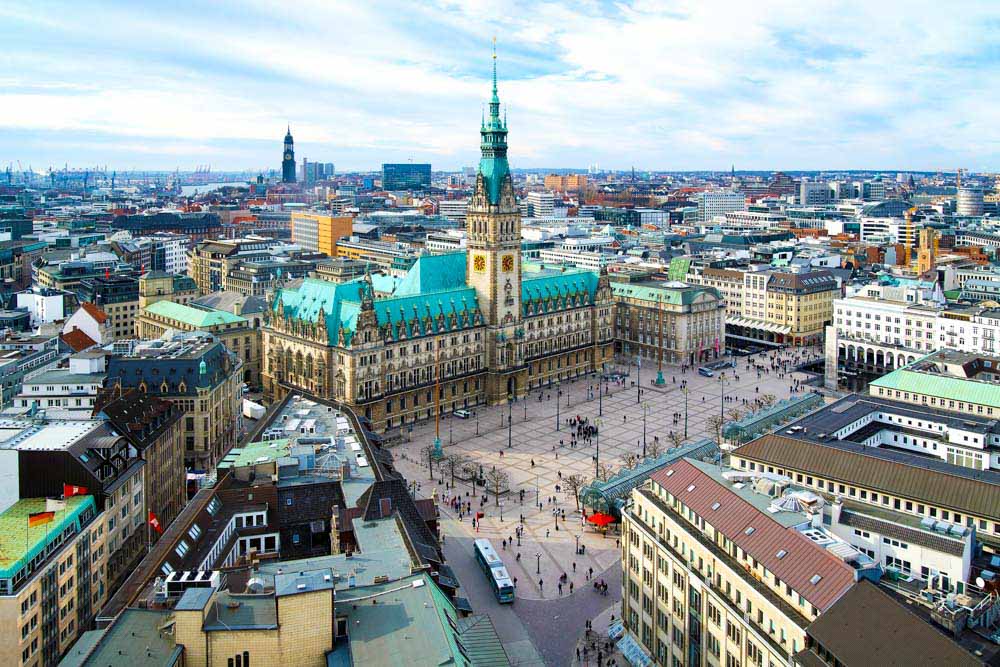
Hamburg’s Altstadt is even more ancient than the 19th-century warehouses of Speicherstadt. Explore the old streets of the Altstadt, admire the wooden buildings that rise next to the canals, and uncover the city’s Hanseatic history, a history that cemented Hamburg as one of the richest trading ports in the world from the 15th century onwards.
Famous Sights in Hamburg

You’ll need two days in Hamburg to really appreciate the city, and have time to visit other famous sights like the Miniatur Wunderland (home to elaborate scale models of destinations from around Germany and the rest of the world), the Flea Market, the International Maritime Museum, St. Michael’s Church, and much more. Take a boat tour of the harbor, embrace great seafood at St. Pauli Fischmarkt, and hit the bars and clubs for a night out.
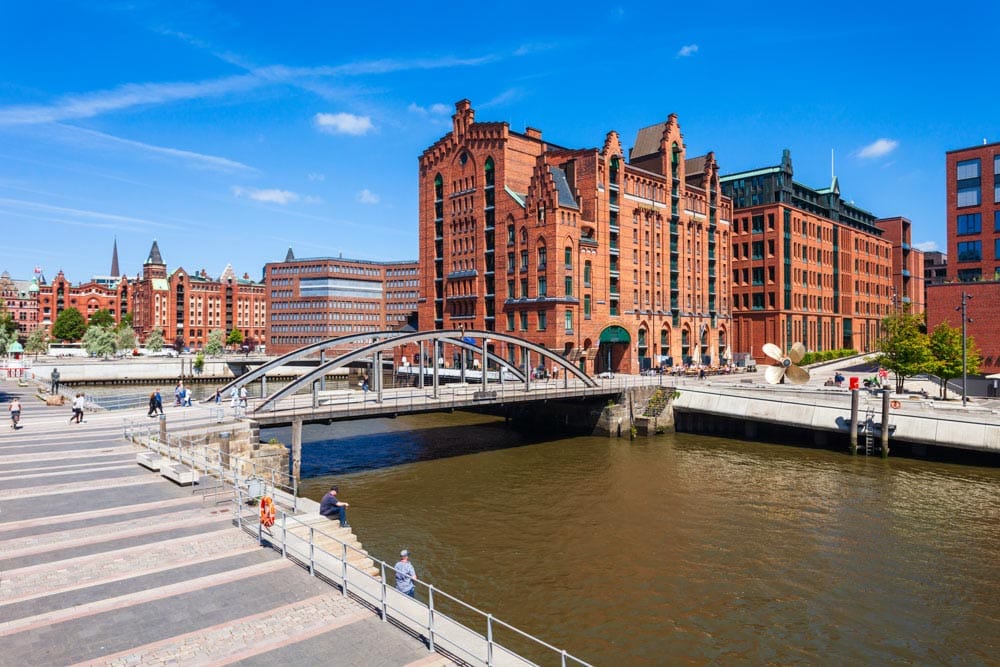
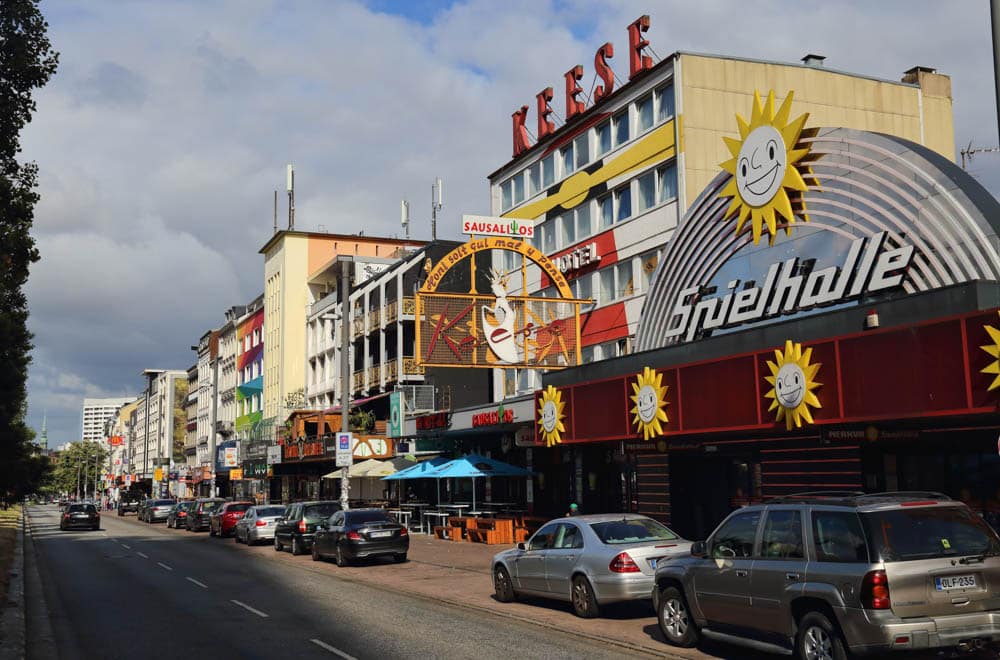
You could even take a tour of the Reeperbahn, Hamburg’s infamous red light district (tours are with certified tour guides and offer a fascinating glimpse into Hamburg’s liberal culture!). In winter, the red light district even hosts its own ”naughty” version of the traditional German Christmas market!
Cologne – 2 Days
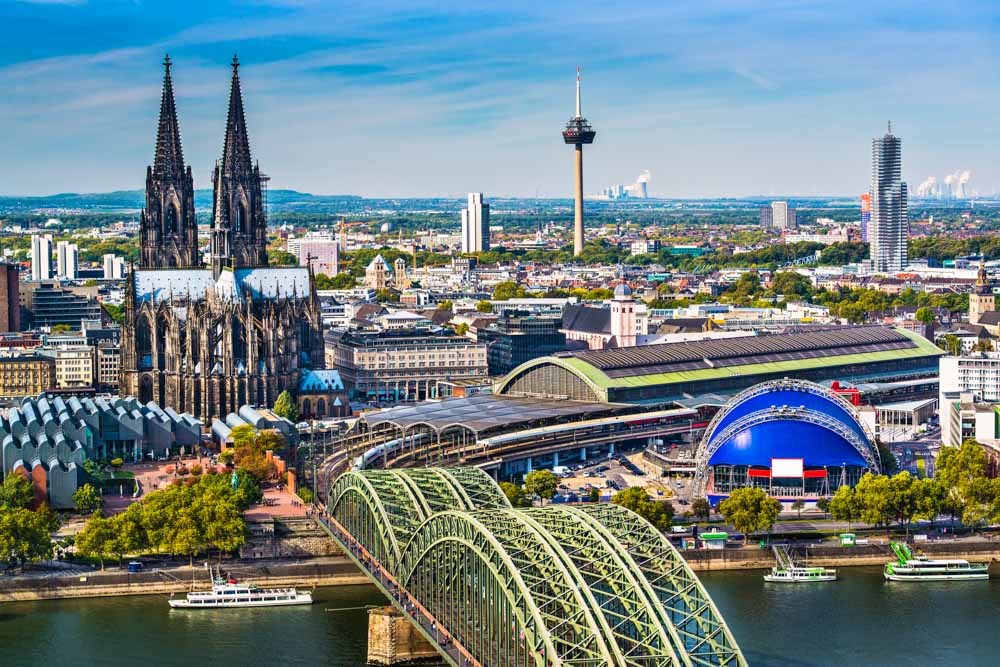
Hop on an InterCity Express (ICE) train from Hamburg, and within 3.5-4 hours, you’ll have crossed Germany and be standing on the banks of the River Rhine. Your next stop is Cologne, where your first point of interest is the magnificent cathedral.
Cologne Cathedral
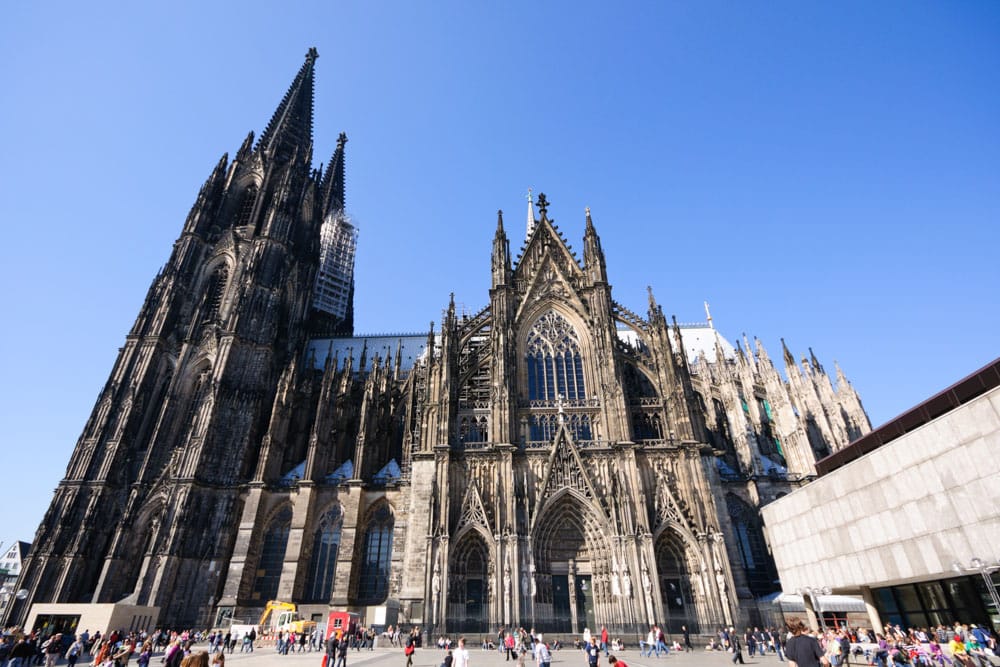
If you do arrive by train, you’ll have seen the twin spires of Cologne Cathedral soaring above the city’s skyline as you trundled over the iron and steel girders of the famous Hohenzollern Bridge. Reaching a height of 515 feet (157 meters), Cologne Cathedral is the tallest twin-spired church in the world, and it’s home to the supposed “relics of the magi,” the remains of the Three Kings who visited baby Jesus in the manger.
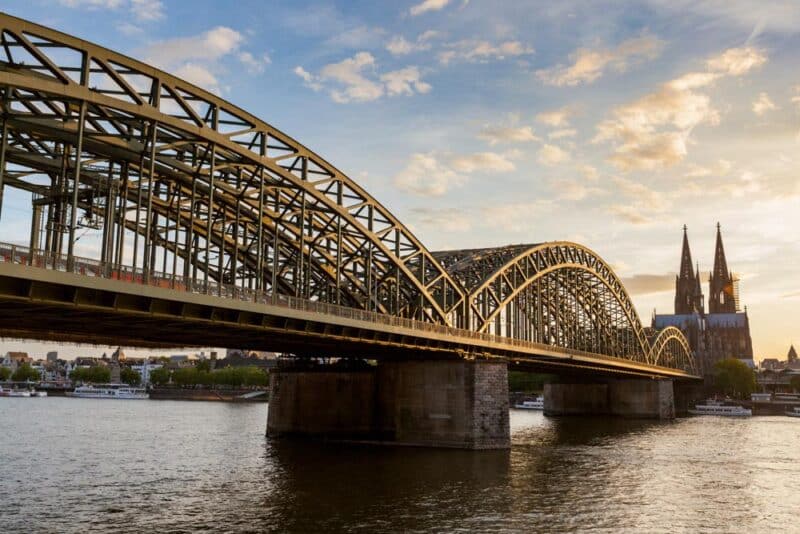

Brave the 533 steps to the top of Cologne Cathedral, and you’ll be rewarded with beautiful views of the city. You’ll have rightfully earned yourself a Kolsch beer, too, which you can enjoy with a Halve Hahn (a rye bread, onion, and gouda cheese sandwich) in one of the traditional pubs in the square below.
Kolsch beer can only be made in Cologne. It’s poured into thin “Stange” glasses that only hold 0.2 liters of beer, and the servers will continually top you up until you say no more!
More Places to Visit in Cologne
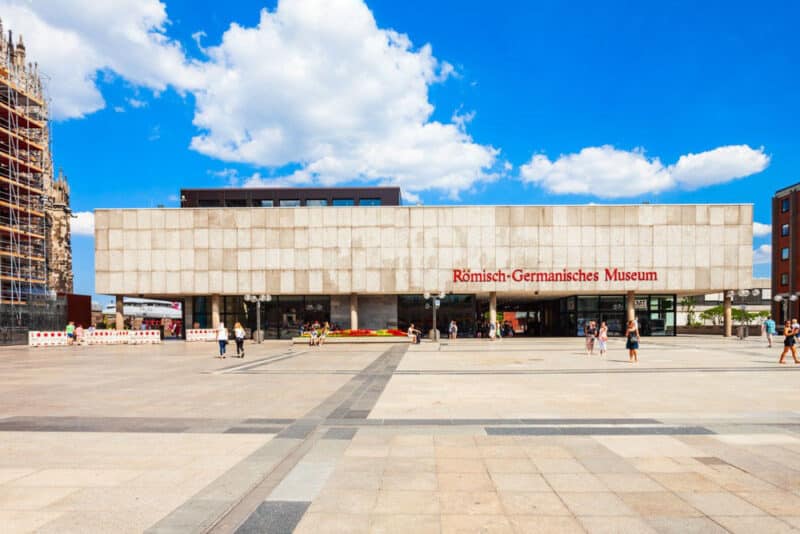
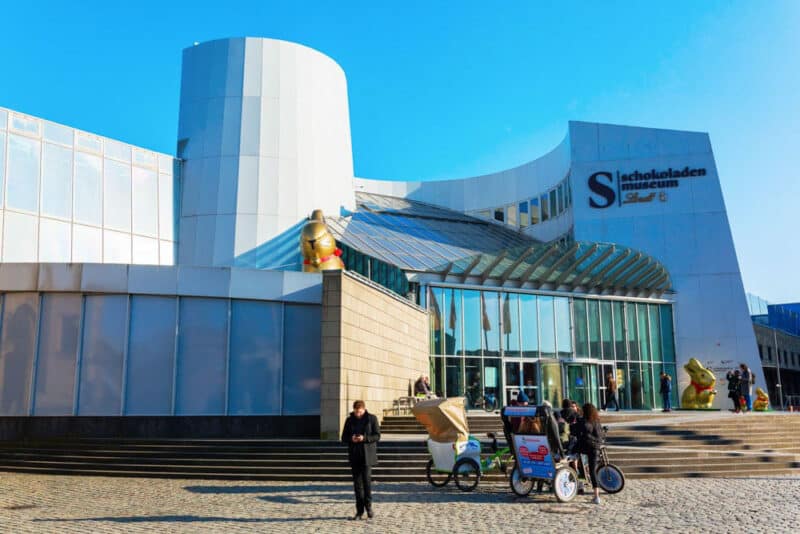
Dating back over 2,000 years to the Roman era, you can explore local history at Cologne’s Romano-Germanic Museum. The Wallraf-Richartz Museum is home to a glorious collection of artwork spanning centuries, and the Chocolate Museum tells the story of cacao, from its Mesoamerican origins to its modern form.
Frankfurt – 3 Days
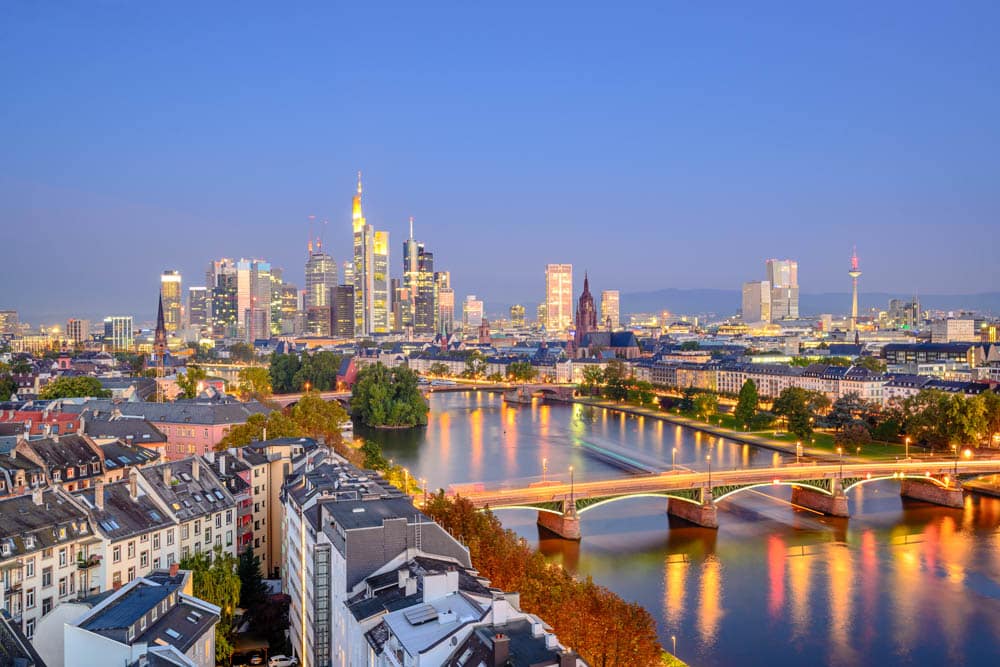
Next, you’re heading south as you hop on another ICE Train for the shorter 1.5-hour journey to Frankfurt. Located on the banks of the River Main, Frankfurt is a fascinating blend of the old town sights and modern architecture.
Main Tower
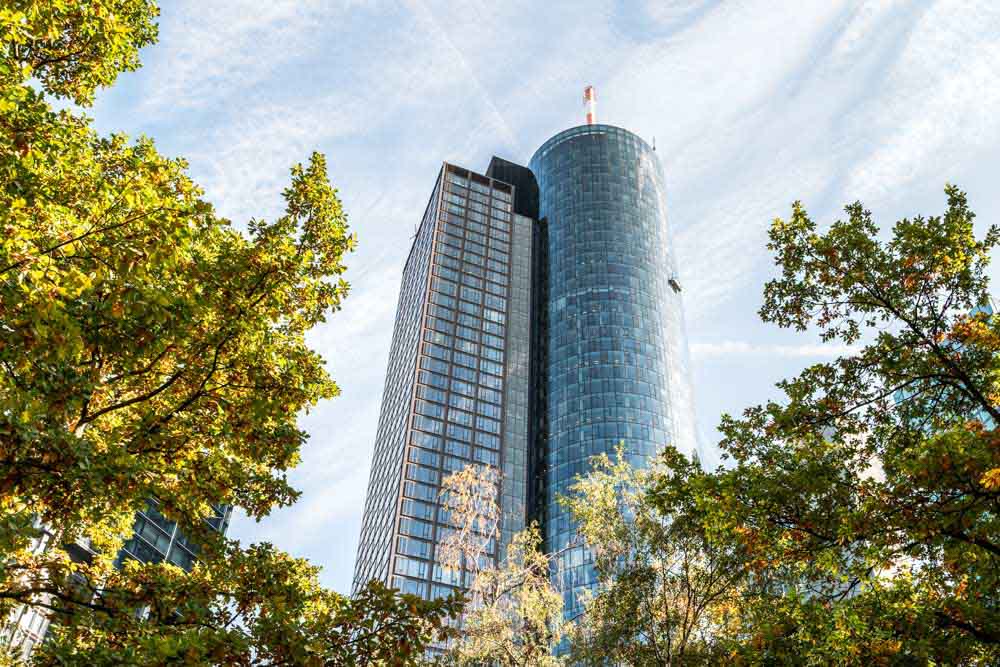
The city is a major financial center, and the skyline is dotted with glittering skyscrapers, apartment blocks, and the famed Main Tower (which offers fantastic views of the city!). But Frankfurt also has a storied history stretching back to at least the 8th century AD. While the city was sadly destroyed during World War II, the Altstadt, or Old Town, was painstakingly rebuilt from the rubble and remains an authentic tribute to the city’s medieval past.
Frankfurt’s Old Town
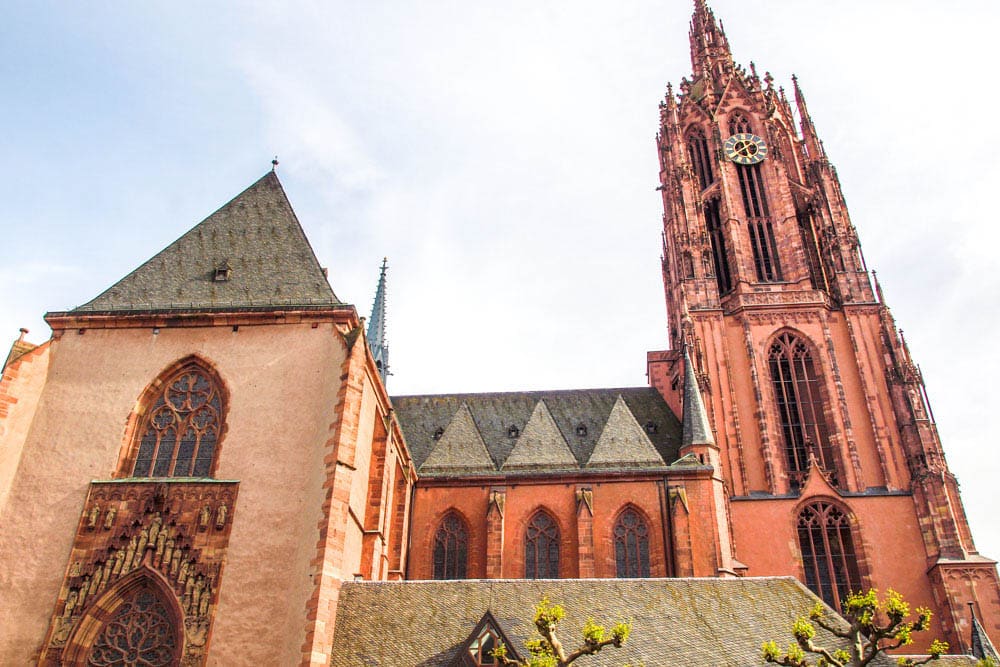
Take a tour of the Old Town to learn how legendary Frankish king Charlemagne supposedly founded Frankfurt and to explore the history of Romerberg Square and the colorful Guild Halls. Don’t miss Frankfurt’s Imperial Cathedral, take a cruise along the Main River, and save time to visit the birthplace of Johann von Goethe, one of Germany’s most esteemed 18th-century writers.
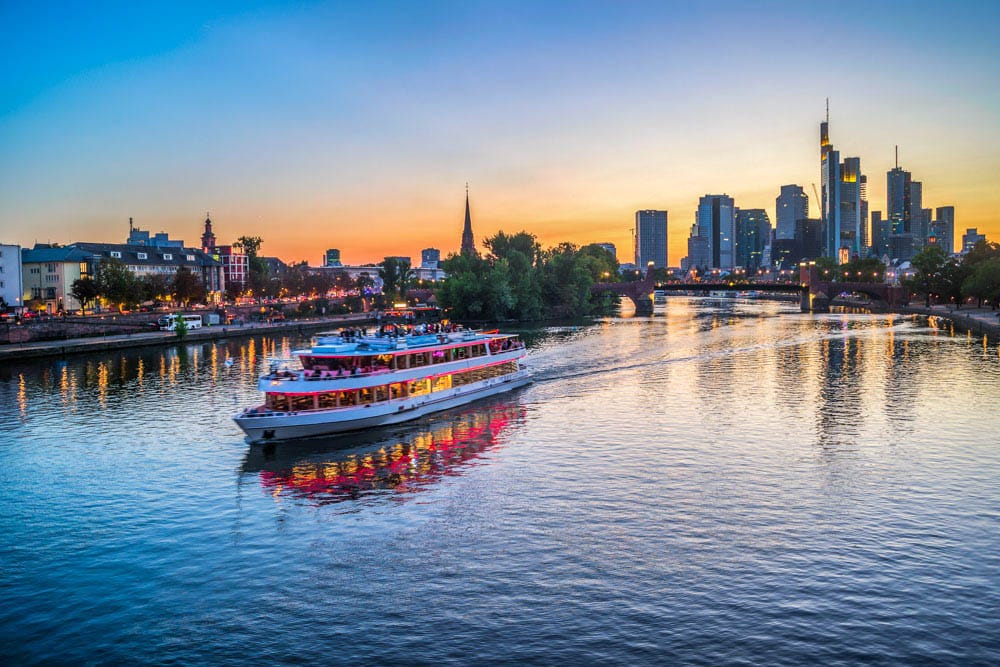
We’ve allocated three days to explore Frankfurt, but you can explore most of the city’s sights in just one or two days. We recommend using the extra days to explore the surrounding countryside and medieval towns for a more traditional taste of Germany.
The Three Castles Hike
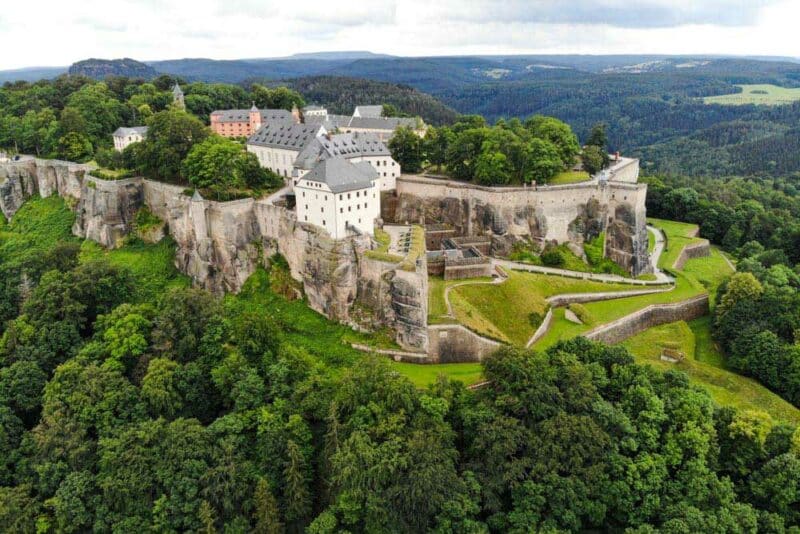
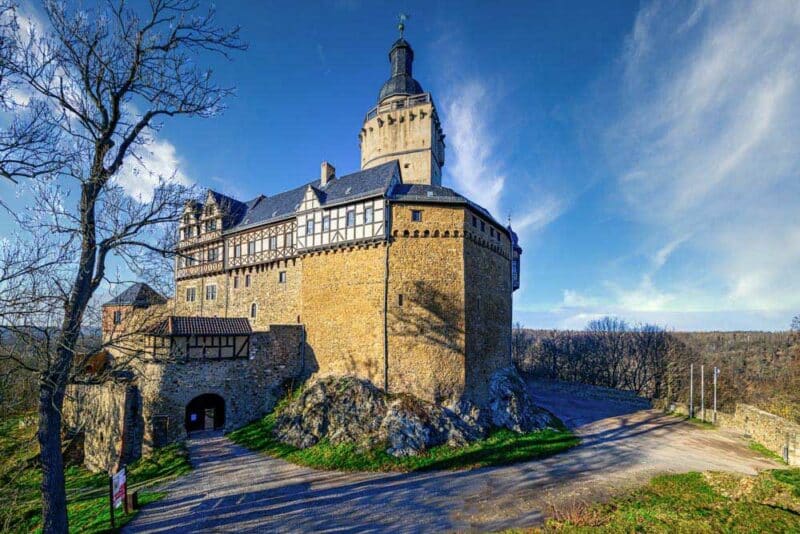
The Three Castles Hike takes you to a series of three castles in the vicinity of Kronberg and Falkenstein – it’s a 7-mile (11-kilometer) hike that’s perfect for stretching the legs. Heidelberg, a 45-minute train ride south of Frankfurt, is one of Germany’s most spectacular university towns, while the delectable wineries of the Moselle Valley are just a day trip away to the west.
Nuremberg and the Romantic Road – 2 Days
Romantic Road
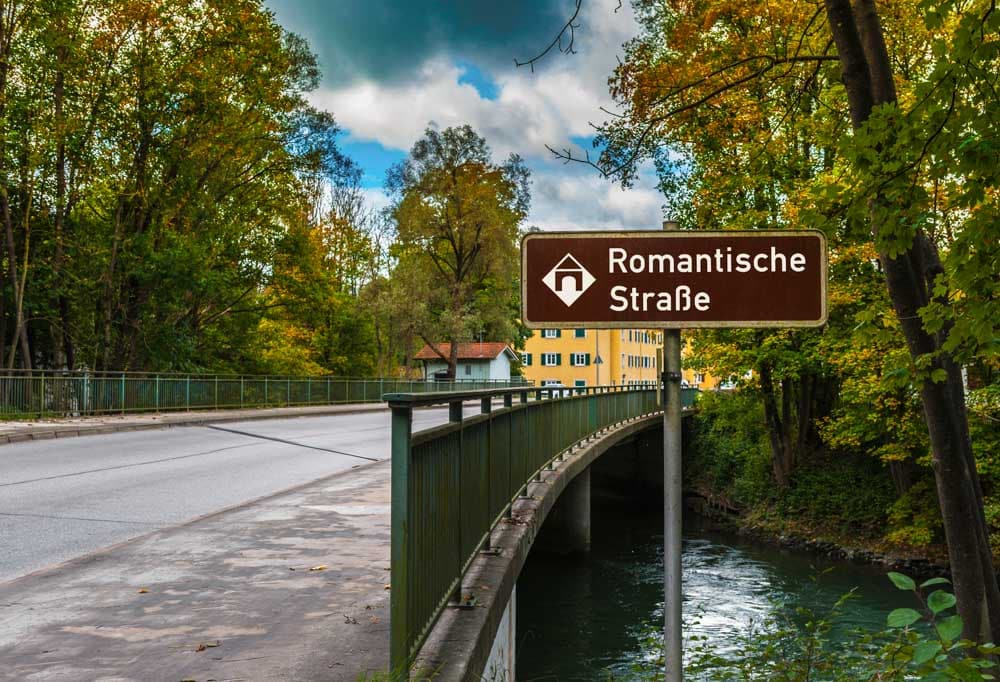
From Frankfurt, it’s time to explore the Germany of old as you venture south into Bavaria as you continue on your 14-day Germany itinerary. You now have two options, both of which allow you to explore the cobbled squares and medieval castles of the Romantic Road as you make your way south to Munich.
The Romantic Road is a beautiful road trip route that starts in Wurzburg, around an hour’s drive east of Frankfurt, and ends in Augsburg, just outside of Munich. Along the way, it traverses glorious medieval towns like Rothenburg ob der Tauber. You can also tour through the wineries of the Tauber Valley, and visit remarkable sights like Harburg Castle and Augsburg Cathedral.
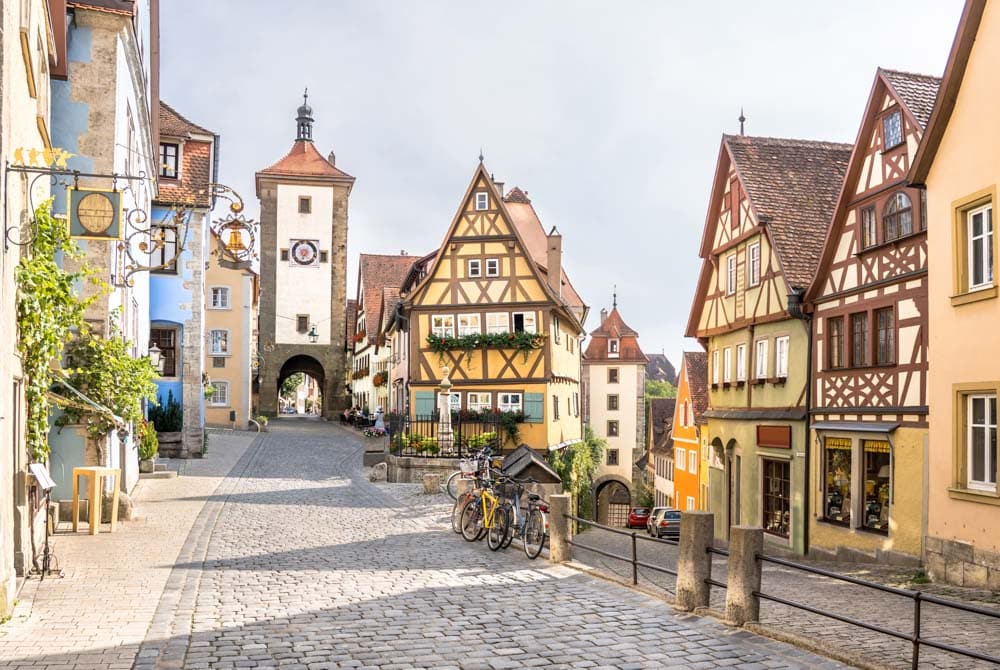
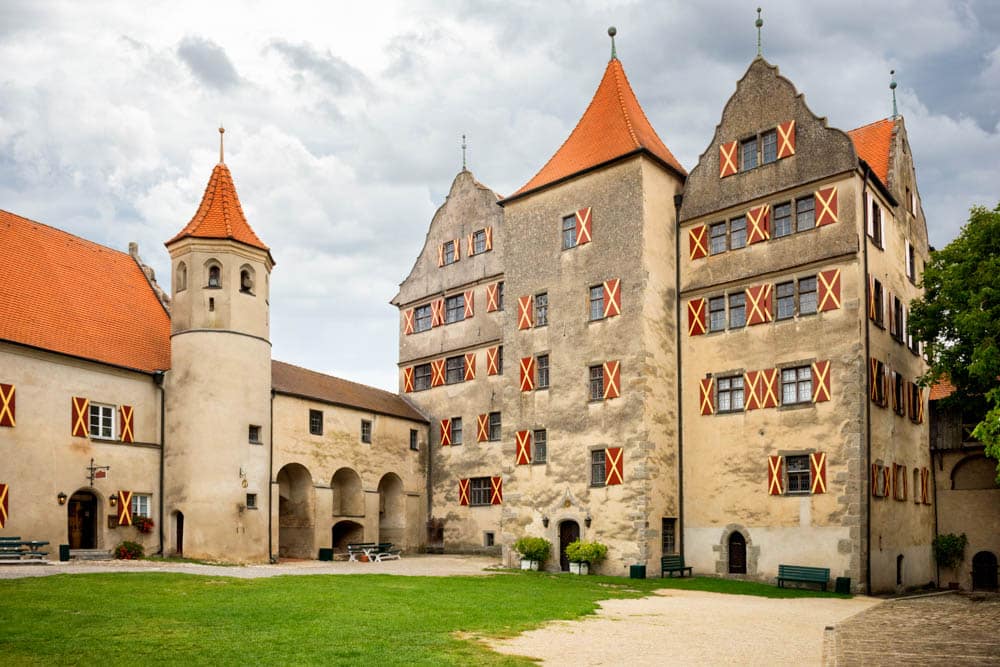
Option 1 is to self-drive the route, allowing you to stop at your leisure in the towns, valleys, and countryside along the way. Some of the locations are difficult to get to via public transport, so this option allows total flexibility. In summer, several tour companies also offer dedicated day tours or overnight tours of the Romantic Road.
Nuremberg
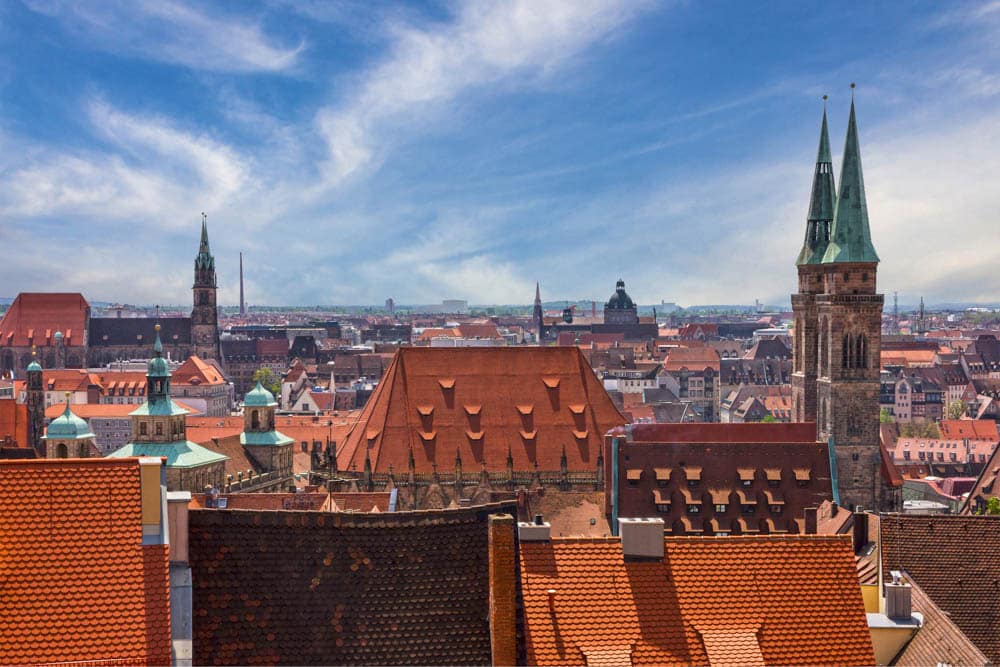
Option 2 is to travel from Frankfurt to Nuremberg by train. This is the second-largest city in Bavaria, and although it’s largely known for the infamous Nuremberg Trials that took place at the end of the Second World War, it’s also home to a marvelous Altstadt, cathedral, and in winter, some of Germany’s best Christmas markets.
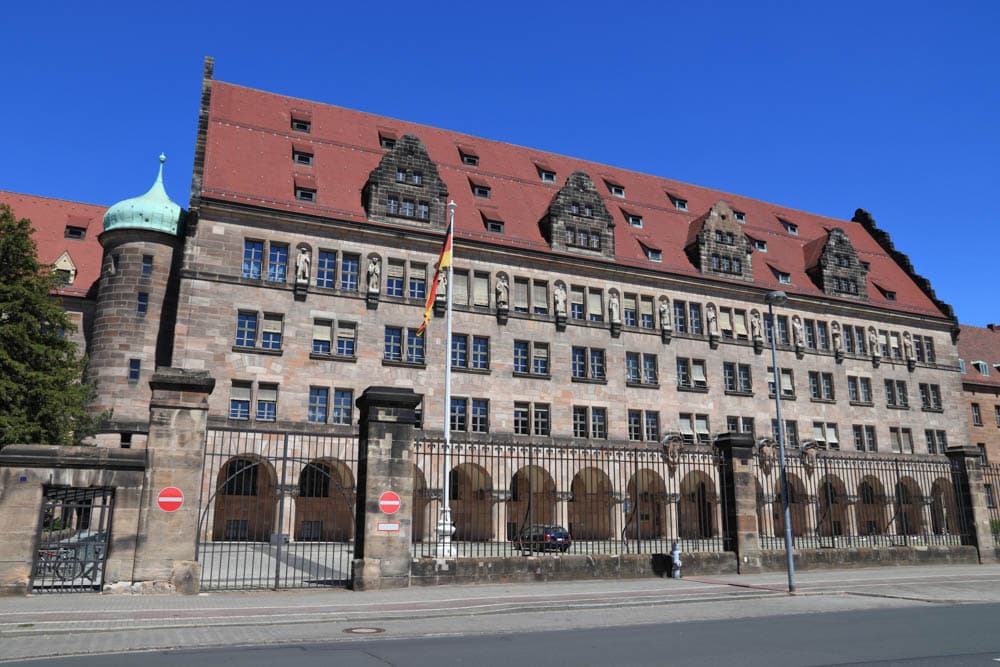
With Nuremberg as your base, you can visit the most important stops on the Romantic Road, including Rothenburg ob der Tauber.
Munich – 2 Days
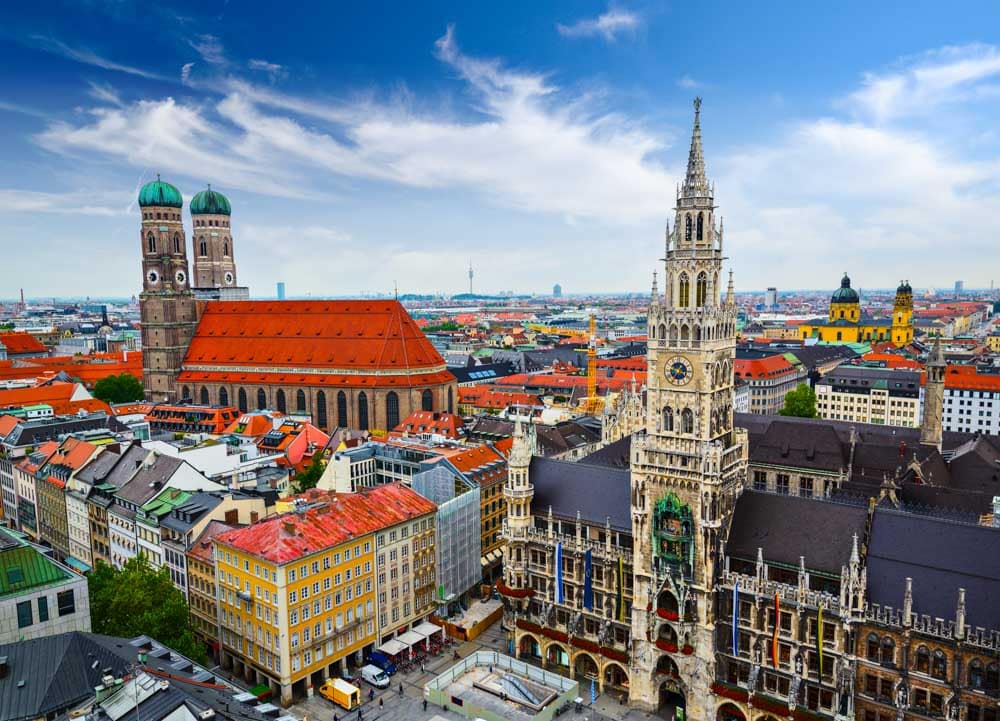
One of the best cities to visit in Germany is Munich, and the Bavarian capital is the perfect place to end your 2-week trip to Germany. From Nuremberg, it’s a short one-hour journey on the InterCity Express Train, or the city is just a quick drive from Augsburg if you’ve been exploring the Romantic Road by car.
Munich is traditional Bavaria at its best. Germany’s third-largest city dates back to at least the 12th century AD when it received its city charter, and for centuries, Munich was the lavish capital of the Bavarian kings.
Munich’s Old Town
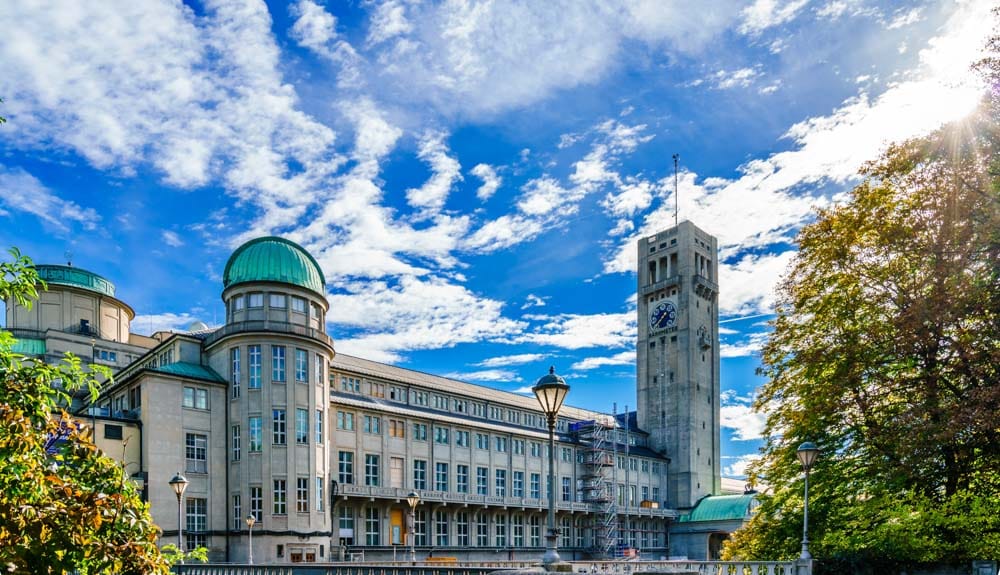
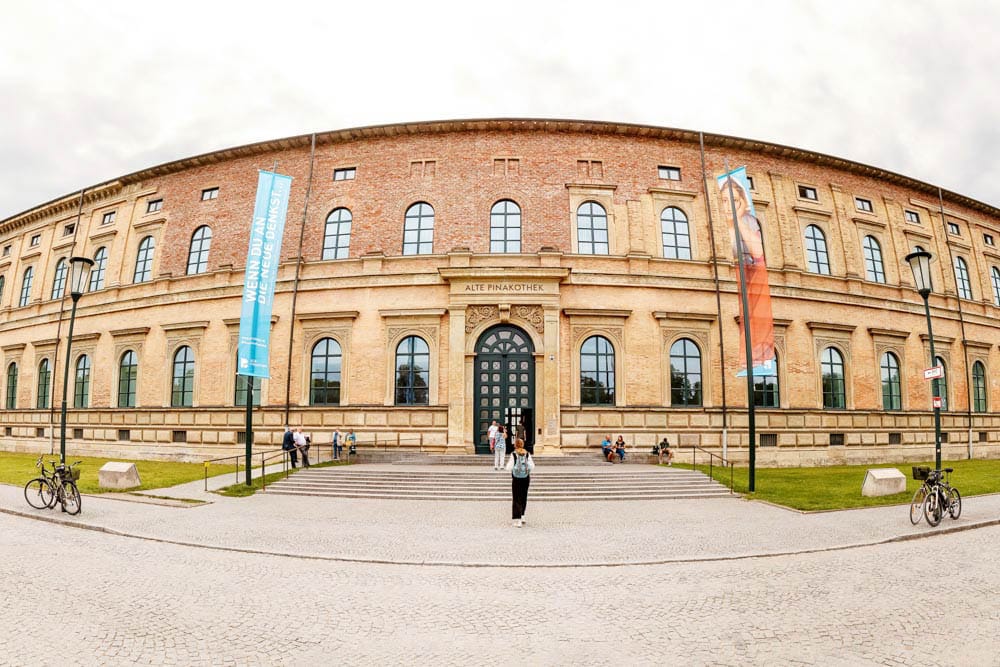
Learn more with a walking tour of the Altstadt, where you’ll see Gothic sights like Marienplatz and the Frauenkirche, which form the heart of Munich’s historic Old Town. Stock up on supplies at the local Victuals Market, which has been held in the center of Munich since 1807, and visit varied museums like the Deutsches Museum (a science museum), the Alte Pinakothek (which houses historic paintings), and the BMW Museum, which tells the story of Germany’s most famous car manufacturer.
Munich Residenz & Nymphenburg Palace
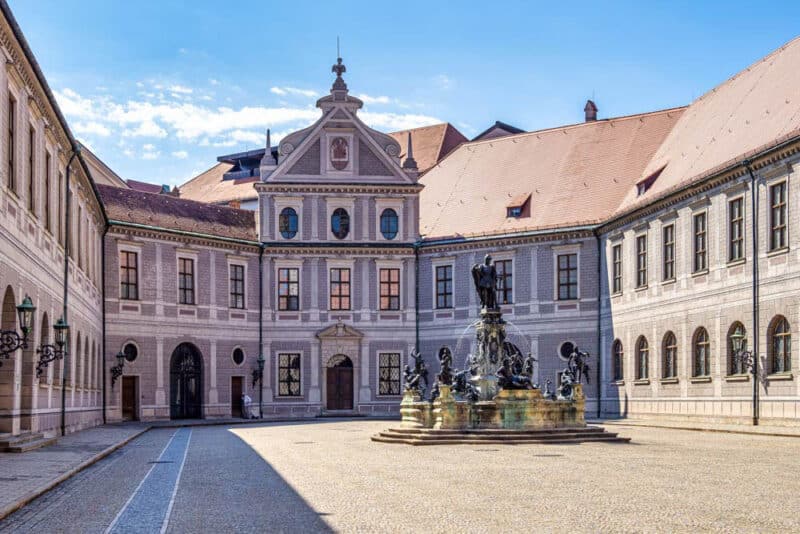
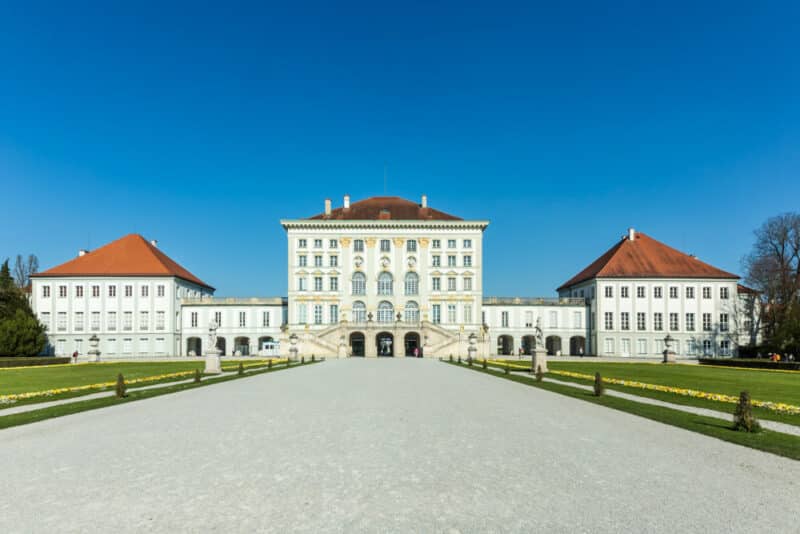
Munich has long been a regal city, and you can delve into the past lives of Bavarian nobility by visiting the Munich Residenz, which was the former home of the Bavarian monarchs, and Nymphenburg Palace, which was the family’s summer residence.
Hofbrauhaus
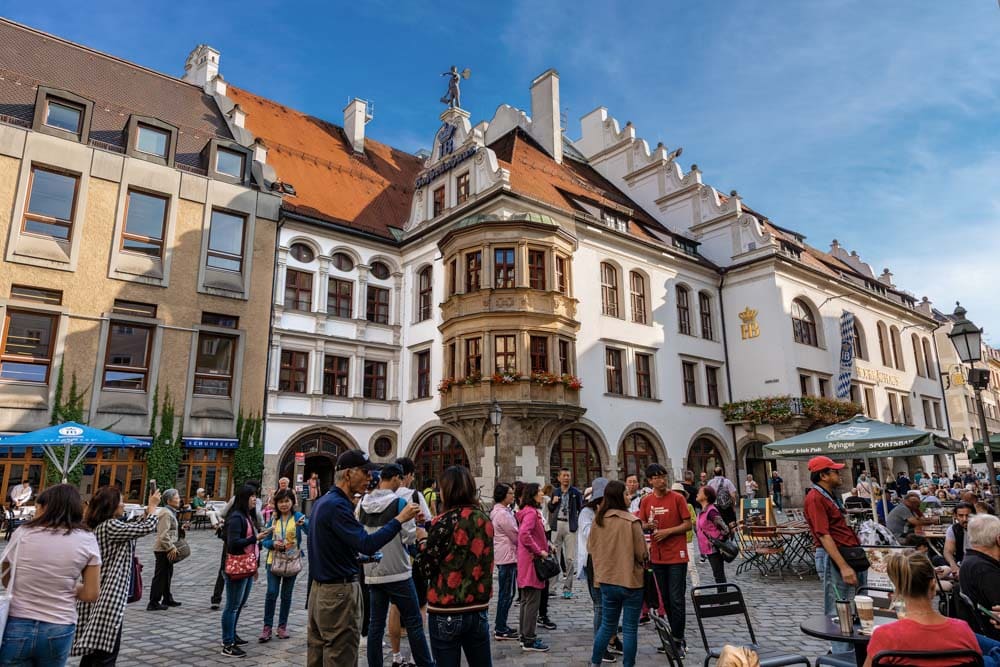
Of course, no trip to Munich is ever complete without a cultural excursion to the city’s infamous beer halls. Hofbrauhaus, with a history dating back to the 16th century, is one of the world’s oldest drinking establishments, and you’ll love sinking steins of beer, gorging on platters of Bavarian food, and listening to the oompah bands play to increasingly rowdy crowds!
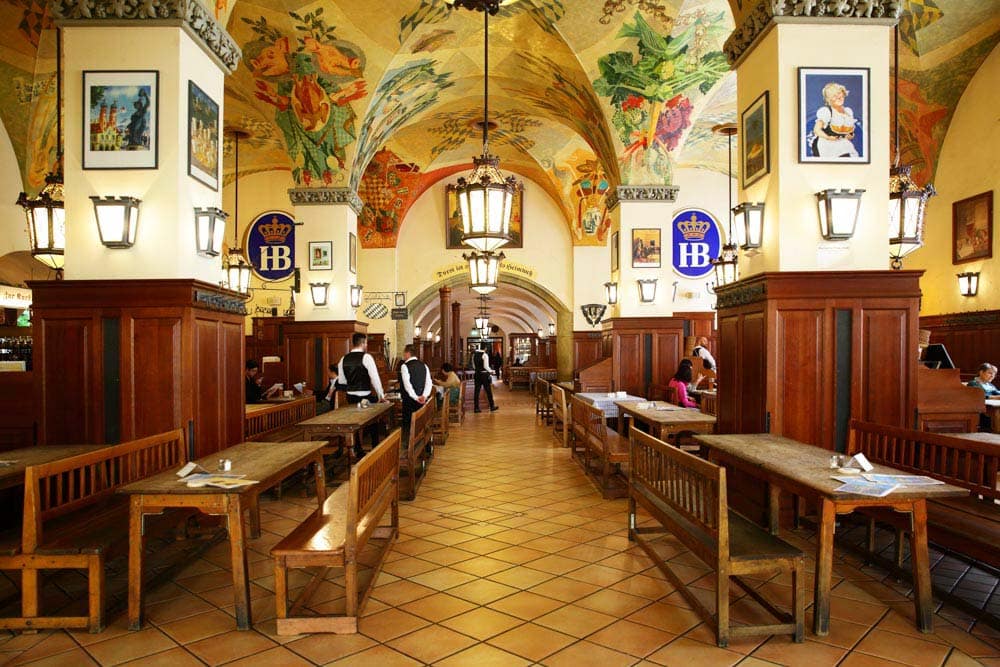
If you’re visiting Munich in September, you’ll get caught up in the Oktoberfest festivities, an annual celebration of beer, food, and merriment that’s taken place in the city since 1810.
There you have it! That’s our perfect 2-week Germany itinerary. Where will you be traveling on your trip to Germany?
Planning a trip to Germany? Check out our favorite books and travel guides!
SHARE THIS ON PINTEREST
